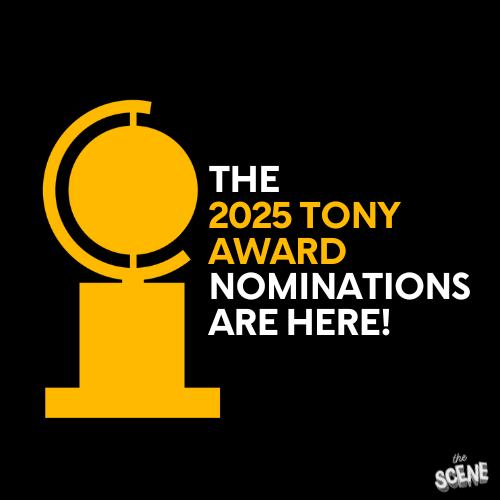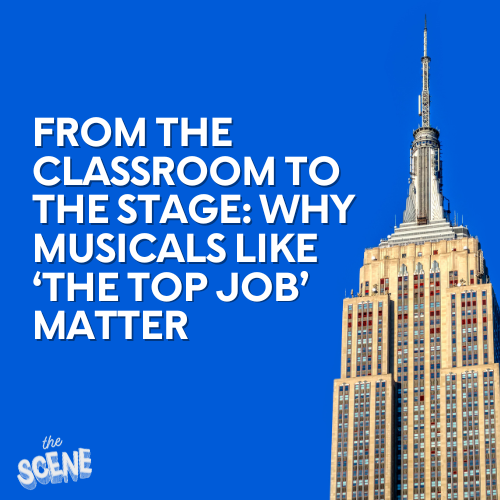by Zach Dulli, The Scene
Picture this: an elementary school cafeteria lined with makeshift stage lights, the low hum of excited chatter bouncing off the walls. A group of nine-year-olds steels itself backstage, waiting to reveal its months-long effort—a brand-new theatre production. Out front, parents clutch programs, teachers exchange proud glances, and the young ensemble bursts forth all imagination and energy. The performance is earnest, maybe a bit wobbly, but thoroughly enchanting. Yet the real magic—the lasting benefits for these students—goes far beyond the final bow. That’s what emerges from the new “Snapshots of Arts Education in Childhood and Adolescence: Access and Outcomes” report, and K-12 theatre educators can take it all to heart.
A Roadmap of the Report
This National Endowment for the Arts–funded report draws on three longitudinal studies by the U.S. Department of Education, tracking children from infancy through high school. At the earliest ages, engagement in the arts is rampant—storytime, singing, or even playing with blocks in childcare are all considered arts-related experiences. As children progress into elementary school and beyond, access to arts at school begins to fade, while some out-of-school arts involvement (like private lessons or community programs) picks up. Ultimately, though, whether we’re talking about toddlers toddling along to a lullaby or 11th-graders choosing an elective theatre class, the data show that sustained arts engagement—especially theatre—shines a spotlight on higher academic, social, and emotional benefits.
Theatre in the Elementary Years
The findings on in-school arts at the elementary level are telling. In kindergarten, 11% of teachers reported providing students with theatre or creative dramatics activities at least twice a week. By 5th grade, that rate plummeted to 2%. This will come as no surprise for anyone who’s directed a school musical in an ever-shrinking time slot. Yet even with decreased in-school access, researchers found that children in 4th and 5th grade who did partake in theatre activities experienced more substantial peer social support and a higher sense of grit—attributes often touted as crucial for success both in and out of the arts.
Why such gains? Theatre is a famously collaborative art form that relies on teamwork, role-playing, and empathy. It’s easy to see how working as an ensemble can encourage a student to nurture peer relationships or persist through problems (try, for instance, re-blocking a scene with half the cast out sick!). The real delight, of course, is seeing those benefits spill over into the rest of the school day: improved focus, listening skills, and confidence.
From the Wings to Center Stage: High School Theatre
At the high school level, the numbers take a fascinating turn. According to the report, over 80% of high schoolers accrued at least half a credit in the fine arts (which include music, visual art, and theatre arts, among others). Even more encouraging, completion of multiple credits in the arts was correlated with higher GPAs, lower dropout rates, and a greater likelihood of graduating high school and attending college.
Specifically, every additional arts credit in high school was linked with a 39% lower chance of dropping out. In practical terms, that means a student who sticks with theatre electives—maybe working from “Intro to Theatre” through “Acting II” and then tackling “Technical Theatre”—is associated with improved odds of staying on track academically. And that effect stretches beyond graduation: the number of high school fine arts credits is positively associated with first-year college GPAs.
Still, the authors are careful to remind us that correlation isn’t proof of causation. They do, however, highlight the real possibility that theatre fosters skills—discipline, self-expression, problem-solving, and a sense of belonging—that prime students for success.
Using the Data to Support Your Theatre Program
So, how can theatre educators leverage these findings? Here are a few takeaway strategies:
- Highlight Theatre’s Social-Emotional Power – School leaders are increasingly interested in programs that build social-emotional skills. The report explicitly notes that elementary students showed more positive approaches to learning and greater social support when engaged in creative dramatics. Amplify this message: theatre isn’t just a “fun elective”; it’s a genuine builder of social well-being, persistence, and peer collaboration.
- Connect Theatre Class to Core Academics – The findings show positive relationships between arts participation and academic outcomes in math, reading, and science—especially in the upper elementary grades. While your latest production of Twelfth Night may not look like a math lesson, you can point out how line memorization hones reading ability, and staging a set involves geometry, measurements, and problem-solving. Show how theatre classes complement core curricula, and administrators might just give you that bigger stage or updated lighting board. We can dream, can’t we?
- Advocate with Longitudinal Data – High school educators can champion the strong correlation between theatre credits, lowered dropout rates, improved GPAs, and higher odds of graduation and college success. In a world driven by metrics, these statistics might help get your principal or school board to listen.
- Partner Beyond School – The data suggest that when kids can’t find arts learning in school, they may turn outside school for private lessons or community activities. So, forge partnerships with local theatres, afterschool programs, or summer camps. By creating official or informal collaborations, you ensure that even if formal class time is cut, students can still access theatre arts, reaping those social and academic rewards.
- Showcase the “Whole Student” – Use performances, showcases, and festivals not just as an end-of-year extravaganza but as evidence of skill-building in action. Invite key stakeholders—superintendents, board members, local business leaders—to see how theatre demands creativity, collaboration, and confidence. When decision-makers actually witness your students analyzing scripts, negotiating staging choices, and supporting one another through stage fright, the intangible becomes tangible—and undeniably valuable.
An Encore for Theatre Education
Reading through the “Snapshots” report, you get the sense that theatre is more than lines and costumes: it’s a training ground for empathy, focus, and resilience. Whether you teach in a bustling urban high school or a small rural elementary, these findings equip you with arguments for why your program should never stand on shaky ground. Yes, we always knew theatre was transformative—but it’s nice to have reams of data backing us up.
So, the next time you find yourself begging for a bigger budget or a better rehearsal space, wave these numbers in the air. “They’re not just learning to act,” you’ll say. “They’re learning to thrive.” With a little bit of luck and a lot of passion, you’ll secure the resources—and the curtain call—that your theatre program deserves
Follow this link to read the full report: Snapshots of Arts Education in Childhood and Adolescence: Access and Outcomes.









